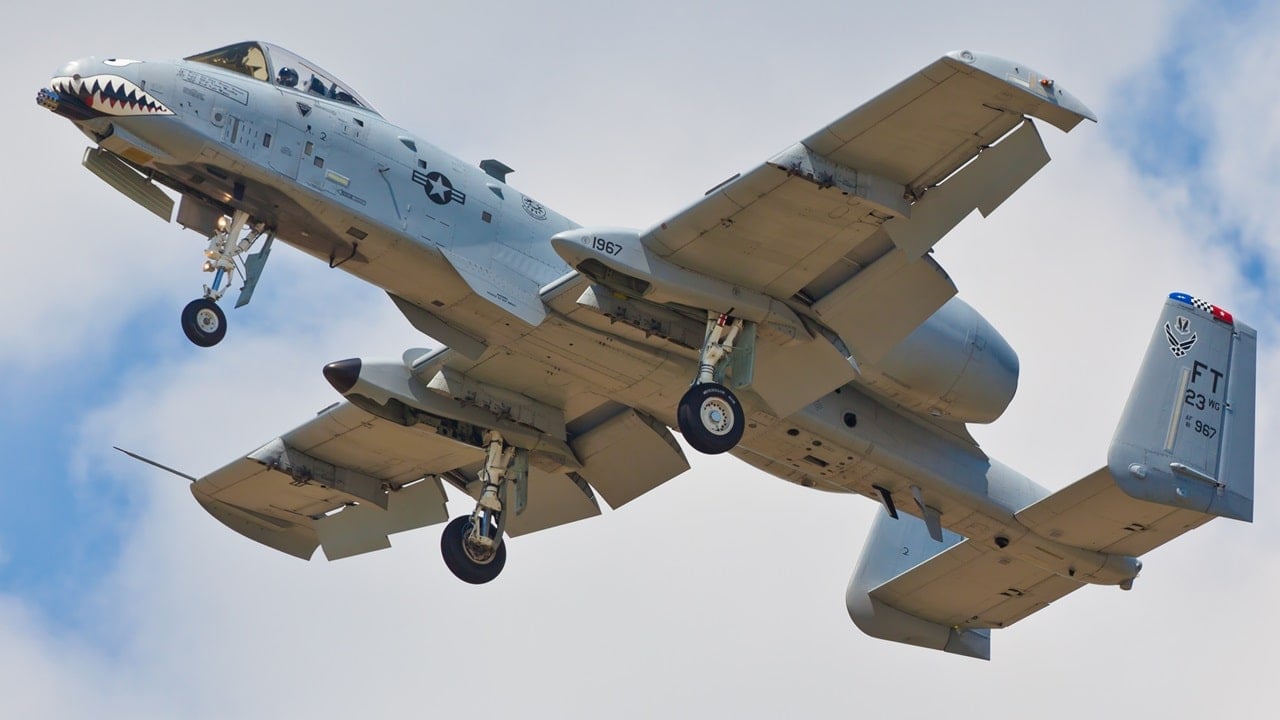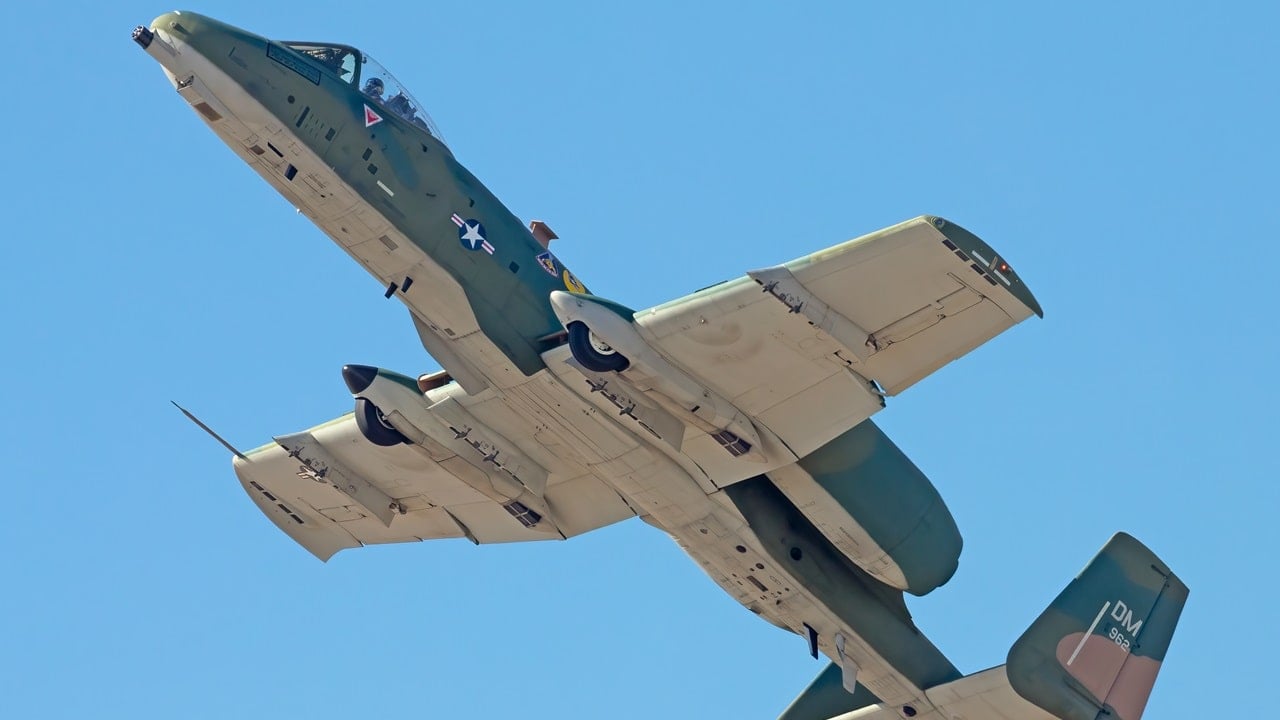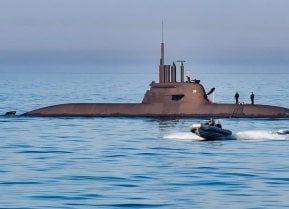Time for a Unbeatable Stealth A-10 Warthog?
The A-10 has proven to be a great aircraft – but there is a lot of hype about its abilities. A common myth is that it destroyed more than 900 Iraqi tanks during the 1991 Gulf War.
Time for a stealth A-10 Warthog: Last year, this reporter happened to be outside on a warm and sunny early autumn day – when an unmistakable sound quickly grew louder. Immediately I recognized it, it was a Fairchild Republic A-10 Thunderbolt II, the single-seat, twin-turbofan, straight-wing, subsonic attack aircraft that first entered service in 1976.

As the sound grew louder and seemed to echo, I realized it was more than one plane. While not deafening, it was loud enough that soon others on my street were poking their heads outside to take in the sight of the aircraft. As I live not too far from Selfridge Air National Guard Base (ANGB), Michigan, it isn't that uncommon of a sound – yet rarely do I get a chance to see the aircraft flying so low overhead.
Yet, on that September afternoon last year, I was delighted by the sight of four of the aircraft banking low over my neighborhood and preparing to head over Lake St. Clair. As I saw the aircraft fly away, I could only imagine what America's adversaries on the ground in the Balkans, Afghanistan, and Iraq must have thought when they heard the sound of the approaching aircraft.
This point is necessary to make as there has been a debate about whether the United States Air Force would have a need for a stealthier A-10. However, the argument misunderstands the role of the aircraft – officially designated Thunderbolt but known to its pilots and crews as the "Warthog."
Simply put: the A-10 wasn't designed to sneak up on an enemy.
Rather, its thunderous arrival is meant to send a clear and audible warning before it rains down hellfire. If you're in an armored vehicle and an A-10 is heard approaching, you might want to take your chances in the open.
Low-Speed A-10 Warbird
The A-10 was designed to offer excellent maneuverability at low airspeeds and altitude while maintaining a highly accurate weapons-delivery platform. The aircraft can loiter near battle areas for extended periods of time, and it is capable of austere landings and operating under 1,000-foot ceilings (303.3 meters) with 1.5-mile (2.4 kilometers) visibility. The Warthog's wide combat radius and short takeoff and landing capability permit operations in and out of locations near the front lines. In addition, with night vision goggles, A-10C pilots can conduct their missions during near-complete darkness.
It was specifically developed as a ground support aircraft, which explains why it remains in service nearly five decades since it first took flight.
Could Stealth Improve the A-10?
Sometime back, conceptual images by aviation artist Rodrigo Avella of an entirely hypothetical A-14 Wild Wolf made the rounds online. His impressive faux fighter took some of the attributes of the A-10 Warhog and integrated more modern capabilities, including the stealth mentioned above.
It would seem to make a great aircraft even better, allowing the A-10 to operate in contested skies and strike ground targets in low-altitude attacks.
The images certainly are impressive, but they completely missed the point of the A-10. More importantly, it also missed that the A-10 has a worthy successor.
The Lockheed Martin F-35 Lightning II was developed to take on several roles, including ground attack. However, even as the F-35 can be used against ground targets, it would never operate in the same way as the A-10. This isn't a criticism of the F-35 but rather a fact that aerial combat operations have evolved. The United States Navy isn't looking to create a stealth dive bomber to target enemy aircraft carriers, so why should the Air Force develop a stealth ground-attack aircraft?
The answer is they shouldn’t and won’t.
The A-10 was designed for a role before developing advanced anti-aircraft systems like Russia's S-400 Triumf. Likewise, modern aircraft, including the F-35, aren't ever going to be taking off from a country road transformed into an austere airbase, and there is little reason to believe the hypothetical A-14 could either.
Finally, the A-10 has proven to be a great aircraft – but there is a lot of hype about its abilities. A common myth is that it destroyed more than 900 Iraqi tanks during the 1991 Gulf War. Later it was determined the actual figure was closer to 300 tanks. It is still an impressive number, but Ukrainian fighters have successfully taken out Russian tanks with man-portable anti-tank missiles and drones.

No Need for Stealth A-10
In other words, there is no need for an aircraft such as A-14 in future wars. The images may make for good "aviation fun," and such an aircraft might be fun to fly in a video game. Still, the Air Force should be concentrating on combat aircraft for the future, not trying to improve upon an aircraft that was able to operate where control of the skies was never contested in the first place.
About the Author
Peter Suciu is a Michigan-based writer who has contributed to more than four dozen magazines, newspapers, and websites with over 3,000 published pieces over a twenty-year career in journalism. He regularly writes about military hardware, firearms history, cybersecurity, and international affairs. Peter is also a Contributing Writer for Forbes. You can follow him on Twitter: @PeterSuciu.
All images are Creative Commons.


